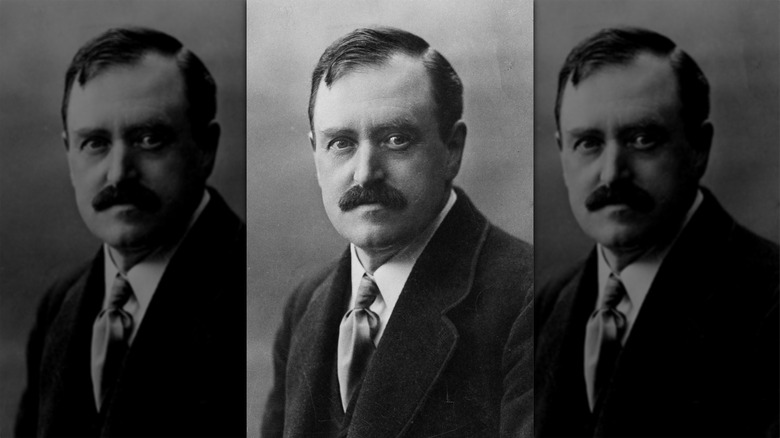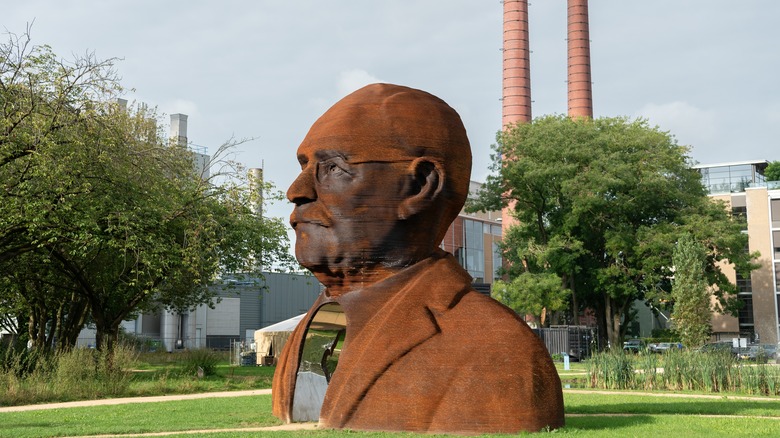Who Was Gerard Philips? The Man Behind One Of The World's Biggest Names In Electronics
After Benjamin Franklin was credited with discovering electricity in the mid-18th century, the 19th century saw numerous inventors and industrialists work tirelessly to commercialize this new aspect of science. In 1808, Sir Humphry Davy invented the first effective electric lamp, opening the door for this technology to be used in residential homes and commercial facilities.
This discovery was perfected by Thomas Edison 71 years later, when he invented an incandescent lightbulb that could stay illuminated for over 40 hours without burning out. That eventually led to the first electric lights being used in Cleveland, Ohio, later that year, which signified the beginning of the commercial electrical energy industry.
Frederik Philips and his son, Gerard, saw this as an opportunity to provide consumers with something they had never seen: cost-effective and reliable incandescent electric lightbulbs. While Frederik Philips took the first step by co-founding Philips & Co. with his son in 1891, it was Gerard Philips who helped transform that small Dutch company into the multinational conglomerate that is known around the world today.
How Phillips expanded into the company we know today
Soon after the business was founded, Gerard hired his younger brother to aid in the organization's expansion. This decision not only avoided bankruptcy for Philips, but also helped it become the third-largest supplier of lightbulbs in Europe by 1900. The commercial success of Firma Philips & Co. allowed Gerard to found the company's first research laboratory — Philips Natuurkundig Laboratorium (NatLab) — in 1914. This became one of the most important parts of Firma Philips because it helped the organization expand into several new and emerging markets, including equipment such as X-rays, radio bulbs, and gas discharge lamps.
In the 1930s, Philips revolutionized the world of haircare with the invention of the rotary electric razor known as the Philishave. By the end of the decade, the company was selling an average of 700 Philishaves each hour. During the '50s, Philips tried its hand at television manufacturing before carving out a role for itself in the Compact Cassette audio player space in the 1960s.
From the '70s to the 2010s, Philips grew into several other commercial fields with revolutionary inventions and ideas like the VCR, LaserVision Optical Discs, CDs, electric toothbrushes, wired headphones, and more. As of November 2024, the small Dutch business once known as Firma Philips & Co. now has a market cap of $25.23 billion, making it one of the 800 most valuable companies in the world.
Gerard Philips' lasting impact
While Gerard will always be remembered as the man who helped co-found Philips, he also made immense social and economic contributions to his home country. Gerard always aimed to improve the economy of Eindhoven, the city where Philips was founded. By the mid-1900s, Gerard and his father hired over 2,000 workers, making Philips the largest private employer in the Netherlands.
Gerard also made sure his workers were taken care of. In 1916, Philips and his wife provided the capital needed to create Van der Willigenfonds — a fund that supplied Philips workers with money so that their children could pursue higher education. Just four years later, the Philips Association for Education and Development was established, leading to the creation of schools focused on nursery, primary, and secondary education. In 1928, the Philips Boys' Industrial Training Program was created, providing young men with a four-year vocational education after they graduated from primary school.
Philips also promoted recreational activities via the creation of the Philips-De Jongh Ontspanningsfonds. This fund provided money to establish the Philips Sports Association, chess clubs, flower-arranging groups, and much more. Gerard Philips was a truly industrious man who changed the world in so many ways. He not only helped establish a company that employs almost 70,000 people today, but he also contributed significantly to social and civic causes that helped make The Netherlands one of the most prosperous countries in the world.


